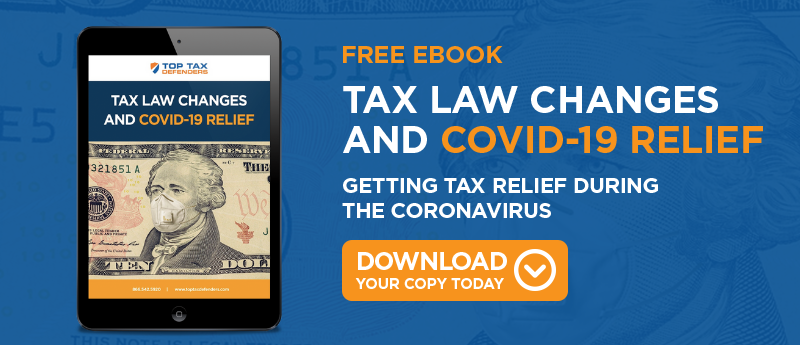
The American Rescue Plan Act or ARPA was signed on March 11, 2021, and provides around $1.9 trillion in federal spending. It includes economic assistance through direct payments, extended jobless benefits, funding for coronavirus testing, and cash to state and local governments. ARPA also has some temporary and permanent changes to the U.S. tax system. Well, as permanent as laws ever are.
Below is an overview of the impact ARPA has on various tax credits, stimulus checks, student loan debt, and programs put into place during the pandemic.
Let’s dive in.
Child Tax Credit
ARPA increased the child tax credit for qualifying taxpayers and children for the tax year 2021.
- $3,600 per child age zero to five
- $3,000 per child age six through 17
- Fully refundable (meaning you get it as part of a refund if you don’t owe anything in taxes)
- $2,500 earned income requirement is eliminated
One perk is that those eligible to receive the child tax credit don’t need to wait until next Spring to claim it. The IRS expects to make monthly payments from July to December 2021 that amount to half of the credit. Taxpayers claim the rest in Spring 2022 when filing their 2021 tax returns.
ARPA changed and expanded the benefits phase-out. There are actually two phase-outs now.
- Applies to taxpayers with adjusted gross incomes of $75,000 (filing single) or $150,000 (filing jointly)
- Those not qualified for the expanded benefits can still receive a child tax credit under rules for 2020
- Those with more than $75,000 for single filers and $150,000 for joint filers can receive up to $2,000 per child
- The $2,000 credit phases out for single filers with AGI of $200,000 or joint filers with $400,000
The rules for 2022 revert back to those in place for 2020 if they are not extended.
Child and Dependent Care Credit
ARPA modifies Section 21 of the Internal Revenue Code of 1986, which covers child and dependent care tax credits.
The change is effective for 2021 only, so next year it reverts to the old rule.
The credit raises the dollar amount on employment-related child and dependent care expenses from $3,000 to $8,000 for one qualifying individual. For two or more qualifying individuals, the credit goes up from $6,000 to $16,000.
The maximum reimbursement rate was also raised from 35% to 50%. The maximum allowable credit amount went to $4,000 for one qualifying individual and $8,000 for two or more.
ARPA reduces the 50% credit amount to a floor of 20% in increments of 1% for every $2,000 a taxpayer’s adjusted gross income exceeds $125,000. For individuals with an AGI above $400,000, ARPA reduces the 20% maximum credit further for every $2,000 above that amount until it is completely phased out.
Student Loan Debt
ICYMI, federal student loans have been in forbearance since March 2020. They are expected to remain that way until October of this year. The expectation is that ARPA will cancel some percentage of student loan debt. Unfortunately, the administration hasn’t announced how much or when.
The cancellation does provide relief for those with student loan debt by temporarily changing the income tax treatment of canceling the debt. Before ARPA, the amount of the forgiven loan was counted as gross income.
ARPA amends Code Section 108(f) to exclude forgiven student loan debt, either federal or private, after December 31, 2020. However, the change is not permanent—the revision sunsets as of January 1, 2026.
Stimulus Checks
A third round of stimmies is authorized. Many have already received theirs. Like the others, your stimulus check is excluded from taxable income. This time, eligibility was expanded to all dependents in a household, not just those under 17.
Eligibility for a check is subject to income limitations.
- Single filers with an adjusted gross income of $80,000
- Head of household filers with an adjusted gross income of $120,000
- Married filing jointly with an adjusted gross income of $160,000
If your income was over the limit for your filing status, no stimmy for you.
Earned Income Credit
The changes for the earned income credit are only for the tax year 2021. The change increases the availability of the credit for childless households.
The calculation of the credit for an individual that has no qualified children changes by increasing the following:
- The phase-out percentage
- The earned income amount
- The phase-out amount
The new credit cap goes from $540 to $1,500. Also, the age of the taxpayer eligible for the credit goes down to 19 from 25. Those aged 20 through 24 have some exclusions. Also, the upper age limit of 65 has been eliminated.
If your 2019 income is higher than your 2021 income, you can use the higher amount to calculate your earned income tax credit. Also, married individuals who are separated can be treated tax-wise as not married for the purpose of this credit, as long as they don’t file a joint return. Other details apply, too.
Unemployment Compensation Benefits
Usually, unemployment benefits are counted as taxable income. That rule was made retroactive to 2020. On the other hand, ARPA makes the first $10,200 of income from unemployment tax-free for single taxpayers with income less than $150,000.
Employee Retention Credit
If you had a business with employees, the CARES Act provided an employee retention credit to help you pay employee wages during the pandemic. It was initially supposed to expire on December 31, 2020, but the Consolidated Appropriations Act extended it to June 30, 2021. Now ARPA extended it to December 31, 2021.
In addition, ARPA expanded eligibility for” recovery startup businesses” and “severely financially distressed” employers. The Consolidated Appropriations Act also increased the employee retention credit from 50% to 70% of qualified wages paid per calendar quarter. ARPA did not expand that.
Finally, the ERC can be claimed against an employer’s share of the Medicare tax of 1.45%.
Guidance from the IRS
Having so many tax code changes over the past few years has left taxpayers and tax preparers seeing double. Also, ARPA was signed into law during the time most people were getting their taxes done.
The IRS understands the confusion some of these last-minute changes cause. Their recommendation at this time is not to file an amended return in response to the changes. They also ask you not to take other unnecessary steps right now, either.
The feds expect to give everyone additional guidance on any provisions that could affect your 2020 tax return, including the retroactive provision making the first $10,200 of 2020 unemployment benefits nontaxable. They just don’t say when that guidance is coming.
If you have not filed your taxes yet this year, you can wait until May 17th. But your tax preparer would probably appreciate it if you went ahead and got them your documentation. It gives them some breathing room, especially since the IRS is too overworked to answer the phone.
If you have any questions about ARPA or anything else tax-related, call Top Tax Defenders.




